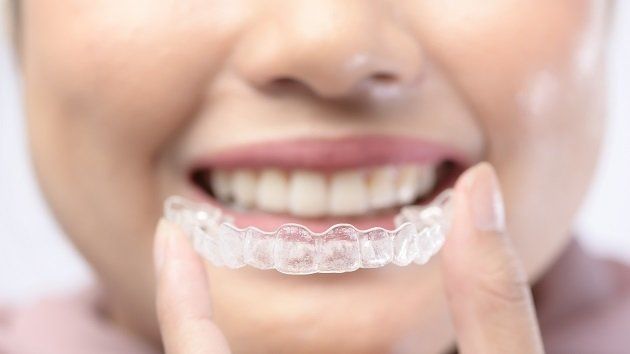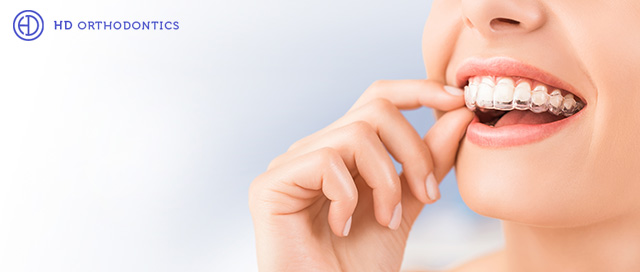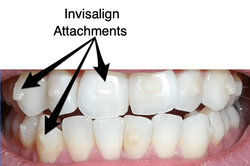The Cost of Invisalign: Comprehending the Investment in Your Smile
The Cost of Invisalign: Comprehending the Investment in Your Smile
Blog Article
Invisalign vs. Traditional Dental braces: Which Alternative Is Right for You?
When thinking about orthodontic therapy, the option in between Invisalign and conventional braces provides several important variables that merit cautious assessment. Invisalign offers a very discreet option with detachable aligners, while conventional dental braces provide an extra visible yet reliable solution for serious imbalance.
Overview of Therapy Options

On the other hand, standard braces include metal brackets and wires that are bound to the teeth. This approach applies continual stress with time to achieve placement. While effective for complicated orthodontic issues, standard braces need regular gos to for modifications and can pose difficulties in preserving oral hygiene as a result of the trouble of cleaning around brackets and cables.
Both choices have their qualities, and the choice typically rests on particular dental conditions, way of living choices, and patient compliance. Inevitably, getting in touch with an orthodontic professional is crucial for identifying the most appropriate therapy strategy tailored to private requirements. Comprehending the subtleties of each alternative can dramatically affect the total success of orthodontic treatment.
Visual Considerations
A substantial variable affecting the choice between Invisalign and standard dental braces is the visual allure each treatment offers. Invisalign aligners are crafted from clear plastic, making them practically unseen when used.
On the other hand, traditional dental braces contain steel braces and cables, which can be a lot more obvious. While innovations in orthodontic innovation have actually brought about the advancement of smaller sized braces and colored elastics, standard braces still keep an even more conspicuous account. For some people, the presence of dental braces might prevent them from seeking required treatment.
Ultimately, the choice between Invisalign and standard dental braces may pivot on personal choices concerning aesthetic appeals. Patients who focus on discretion usually favor Invisalign, while those that are much less concerned regarding visibility may go with traditional dental braces. Recognizing the aesthetic ramifications of each alternative is vital for making an informed decision that aligns with one's way of life and choices.
Comfort and Convenience

In regards to convenience, Invisalign aligners are detachable, enabling clients to appreciate their preferred foods without restriction and maintain optimal dental health. Brushing and flossing are simplified, as the aligners can be gotten during these routines, whereas conventional braces require careful maneuvering around cables and braces.
In addition, Invisalign's modern system enables for fewer orthodontic sees. Clients typically receive several sets of aligners at the same time, which can improve the therapy procedure and reduce time invested in the orthodontist's chair. On the other hand, typical dental braces necessitate normal modifications, making them less hassle-free for those with hectic schedules. Invisalign. Generally, the convenience and convenience of Invisalign make it an enticing choice for numerous individuals seeking orthodontic treatment.
Treatment Duration and Performance
While both Invisalign and typical braces are effective in correcting dental misalignments, the period of treatment can vary substantially in between the 2 alternatives. Normally, Invisalign therapy can take anywhere from 12 to 18 months, depending on the intricacy of the situation. The clear aligners work by progressively changing teeth into their wanted placements, and regular follow-ups with an orthodontist aid guarantee progression stays on the right track.
In comparison, traditional braces typically call for a longer dedication, generally ranging from 18 months to three years. This is because page of their set nature and the use of brackets and cords, which can be much more efficient for extreme misalignments and intricate situations (Invisalign). The treatment effectiveness of typical dental braces is well-documented, as they enable exact adjustments and better control over tooth motion
Eventually, the option between Invisalign and conventional braces may depend upon both the anticipated treatment period and the particular dental problems handy. Consulting with an orthodontist is important, as they can provide tailored referrals based on specific requirements, guaranteeing the selected approach straightens with desired outcomes and durations.
Expense Comparison and Insurance Alternatives
Cost plays a substantial role in the decision-making process for individuals thinking about orthodontic treatment, whether choosing Invisalign or traditional dental braces. Typically, the cost of Invisalign ranges from $3,000 to $8,000, while conventional braces typically set you back in between $2,000 and $6,000. Variables influencing these costs consist of the complexity of the situation, the duration of therapy, and geographical location.
Numerous oral insurance strategies give partial insurance coverage for orthodontic therapies, but the specifics can vary extensively. Generally, standard dental braces may be much more frequently covered by insurance coverage strategies compared to Invisalign, which some insurers classify as a cosmetic treatment.
Additionally, several orthodontic techniques provide adaptable layaway plan, making both treatment choices more obtainable. People should ask about potential financing choices and discounts for in advance settlements. Assessing the total cost, including insurance advantages and settlement strategies, is important for making an informed decision that lines up with both visual choices and spending plan considerations.

Conclusion
In recap, the option in between Invisalign and typical dental braces pivots on numerous elements, including aesthetic choices, comfort, therapy period, and expense. Invisalign uses a discreet, removable alternative that helps with oral hygiene and nutritional versatility, while conventional braces might be much more appropriate for complex dental concerns and usually come with a lower price factor. Eventually, examination with an orthodontist is vital to evaluate individual circumstances and determine one of the most ideal therapy alternative for attaining ideal dental positioning.
When considering you could try this out orthodontic treatment, the choice in between Invisalign and typical braces provides a number of important variables that merit cautious evaluation.Comparing Invisalign and typical dental braces reveals distinctive therapy alternatives for orthodontic adjustment.While both Invisalign and traditional dental braces are efficient in fixing dental imbalances, the duration of therapy can differ dramatically between the two alternatives.Cost plays a substantial function in the decision-making process for people thinking about orthodontic therapy, whether choosing for Invisalign or traditional dental braces.In summary, the selection between Invisalign and traditional dental braces hinges on multiple factors, including visual choices, convenience, therapy duration, and cost.
Report this page